This bird is native to North America and much of Europe and is one of the most popular birds for falconers, both traditionally and modern. Fast off the fist, and always intent to hunt, this bird can be a handful, too. She is known as a fierce hunter and can be destructive. There are several subspecies including the Queen Charlotte Goshawk native to Vancouver Island (Accipiter gentilis laingi), the southwestern United States' subspecies of Apache (Accipiter gentilis apache), and the Northern Goshawk which covers most of the remainder of the range (Accipiter gentilis atricapillus).
These birds can weigh anywhere from 500 g to 900 g and some Czechoslovakian Goshawks will fly up to 1100 g.
Plumage
The immature plumage of the Goshawk is tan and brown striped and speckled. It is common for an immature Goshawk and an immature Cooper's Hawk to be confused. The Goshawk is the larger of the two having a more rounded tail.
The shape of the male Goshawk head and the female Goshawk head are slightly different, and noticeable in both immature chicks and in adult birds. The male is usually described as having a rounder head, more like a golf ball that has a beck stuck on. The female head has a wedge shape that blends more smoothly into the beak.
The adult Goshawk has a distinctive black hood and white superciliary streak, a blue-gray back and underwings with a creamy breast. The tail feathers are barred with black. They also have two different adult plumages which they alternate - a dark phase and a light phase. The first moult as an adult is typically their light phase where their adult plumage is a shade light. The next year they will be in their dark phase where their same adult plumage colors are a shade dark, and so on.
The adult North American Goshawks have "chain mail" patterning to the grey of their breasts and develop the very deep red eye that is characteristic of mature Goshawks. The European (or Finish) Goshawk has horizontal bars across the chest which some liken to a Peregrine. Their eyes tend towards an amber color rather than the ruby of the NA Goshawks. Western NA Goshawks tend to be darker.
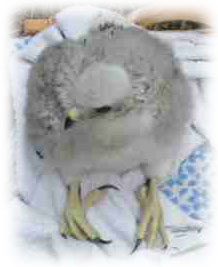 |
An eyass male Goshawk
Goshawk owned and now flown by falconer Geoff Hirschi |
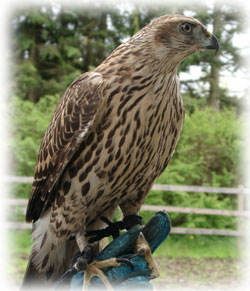 |
An immature male Goshawk - sometimes referred to as "in its brown year"
Goshawk owned and flown by falconer Geoff Hirschi |
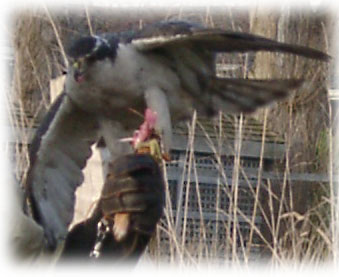 |
A mature Northern Goshawk taken in Washington state - you cannot see the red eye well from this shot, but it is quite dark.
Goshawk owned and flown by falconer Steve Layman |
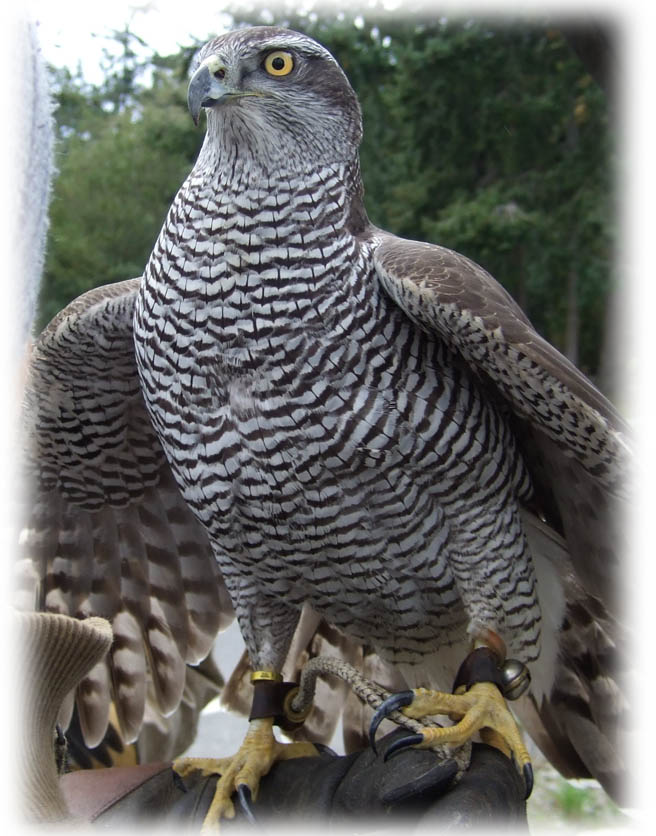 |
A mature Finnish Goshawk - notice the yellow-orange eye and the pattern of barring on the feathers. Typically a Finnish Goshawk can be identified by these two traits.
Goshawk owned and flown by falconer Aaron Smith |
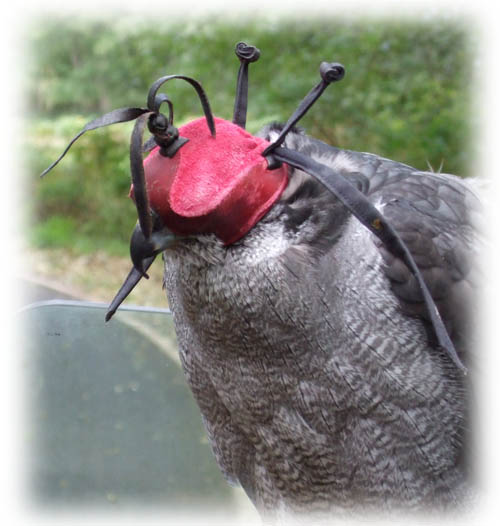 |
A mature North American Goshawk - notice the different pattern on her feathers, often referred to as mail. |
Hunting
This bird's hunting style is marked by stealth. They prefer for their prey to never see them coming and prefer to attack from behind and below. They tend to underfly their prey taking them from under and behind to stay just out of sight. They are so intense that they will even chase their prey into brush on foot. Typical quarry with the Goshawk will run the range from rabbits to ducks, grouse, geese, squirrel, and pheasants. The northern Goshawk tends to eat more Arctic hare, lemmings, and ptarmigan. The southern tends to eat more ruffed grouse. Both tend to take more birds in their diet with mammals as a secondary. It lacks the heavy body needed to crash through thick brush as a Red-Tail can, but is fast enough off the fist to catch prey before it has had a chance to find cover. Many falconers have noted how much more keyed in this bird is by movement, particularly fast movement. It seems to catch their attention and they instinctively attack, however with everything out of sight they may lose interest.
Trivia
The Goshawk is traditionally called the Goose Hawk (Gos-hawk being shortened from the term). In French medieval texts, this bird has also been called the kitchen hawk or cuisiner. Also called the Blue Darter or the Big Blue Darter.
These birds are found in the forests and prefer cool forests building their bulky nests in the north or in higher altitudes and are sensitive to heat (especially over 70°F). Goshawks also have an interesting behavior of identifying a plucking post where they take their prey and pluck it clean before bringing it in to the nest. A plucking post is a sure sign that a Goshawk nest is somewhere nearby. Goshawks also prefer permanent water near their nesting site.
Many falconers note the different head shapes that males and female Accipiters have. Males tend to have a rounder head while female heads are described as more wedge-shaped when viewed from above. In other words, the distance from the center of the top of the head to the cere is shorter in males than in the females causing the female head to appear wedge-shaped and the male head to be more rounded in the front. Females are also noted to have more hooked shape to their beaks.
If using a neck bell for the bird, the tie should be the same diameter as a quarter.
Those who have studied these birds in the wild have noted that the birds often leave their high altitude, forested nest site, going to a lower altitude to hunt, will gorge or bring prey back with them to the nest site. Once well filled they may not go back to the lower altitude for another day or two until they need to hunt again.
Links
http://web4.audubon.org/bird/BoA/F2_G10a.html
https://www.mbr-pwrc.usgs.gov/id/framlst/i3340id.html
https://www.youtube.com/watch?v=vFr5oU88wL4
https://www.youtube.com/watch?v=2CFckjfP-1E#at=55